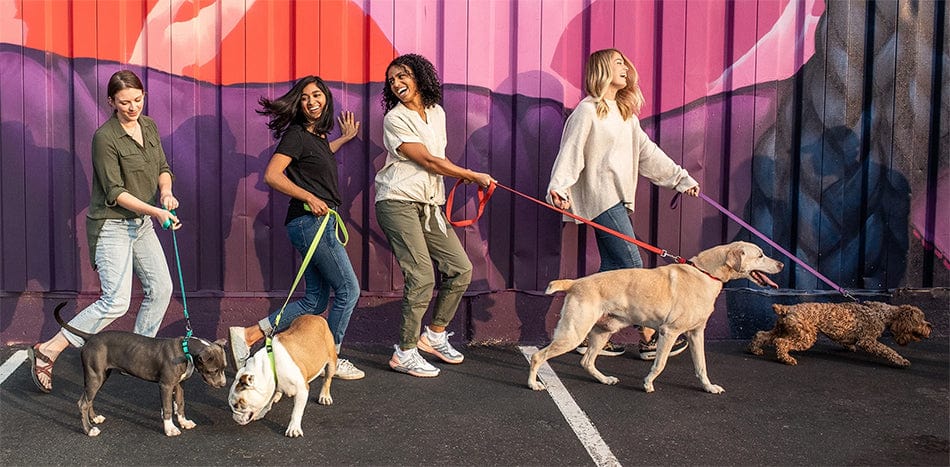Your cart is empty. Let's fix that!


There are many different cat breeds, and there is a type to match any pawrent’s personality. It can be difficult to choose the best breed of cat to adopt, as there are many factors that play into this decision. The most important components to consider are a cat’s allergen levels, age, and if you’d like to have an only cat or multiple kitties in your home. Luckily, there’s no decision making process when it comes to noms, because all cats are sure to love our delicious wet cat food and calming treats.
If feline friends cause you to itch and sneeze, you aren’t alone. People are twice as likely to be allergic to cats than dogs. Contrary to popular belief, it’s not the cat’s fur that irritates your system. It’s actually a protein called Fel D1 found in cat saliva that causes allergic reactions. When cats lick their coats, the saliva dries and the allergens become airborne, which increases the likelihood for an allergic reaction.
Other factors besides breed play a part in the allergens that cats produce:
Some breeds produce less of this protein than others, making them ideal cats for people with allergies. Fortunately, there are a wide variety of cat breeds that are hypoallergenic, so you can have your cat and enjoy them too!
These guys are chatty Cat-thy’s, and love communicating verbally. They have been nicknamed the “longhaired Siamese” for their gorgeous coats and are smart, sweet, and fun to be around.
They just want to entertain you! These divas love being the center of attention.
While everyone likes noms, these cats have a particular fascination with food. You won’t find them packing on any extra pounds, though, because they tend to burn off extra calories through playful exercise.
While cats get a bad rap for being antisocial, these kitties are stage five clingers. They’ve been known to cuddle up with you at night and wake you in the morning with kisses.
Many cats love all of their household humans, but Rexes tend to pick favorites and are actively outgoing and affectionate towards them.
Siberians are smart cookies, and are able to problem-solve to get what they want. Despite their heftier physique, they are very agile and are great jumpers. For these leapers, assume every surface is accessible.
It may seem illogical, but hairless cats are not hypoallergenic. These cats still produce allergens, which can cause unpleasant reactions for humans with allergies. However, bald kitties do secrete less allergens, and since they don’t shed like a furry cat, there’s no allergen laden fur to linger on beds, couches, and carpets. Therefore, some people who have allergies may be able to tolerate living with a hairless cat. Check out some of the most popular hairless cat breeds below.
Sphynx are quite animated and excitable, which is why they are often compared to dogs. Not a ruff association at all!
These cats are slightly different from the Sphynx breed because the gene that governs their hairless trait is dominant, rather than recessive. Not all of these cats are fully bald, some Peterbalds have slightly fuzzy coats, like a fresh buzz cut.
A mix of Peterbald and Siamese, the Donskoy is known for its webbed toes. Donskoy cats were not blessed with the graceful aging gene and are more wrinkly than the Sphynx, but are just as friendly.
Minskins are teensy tiny bald cats that are a crossbreed of Sphynx and Munchkins. Like corgis, they have very short legs and big personalities.
Although they look like they belong on the set of a Lord of the Rings movie, these ethereal creatures are non-fictional! A crossbreed of Sphynx and American Curl, these hairless cats are social, active, and playful.
The amount a cat sheds has more to do with the breed than the coat length, so fluffy cats won’t necessarily shed more. However, out of all the different types of cat breeds, this one requires the most brushing!
These fluff muffins are quite large (12-15 pounds on average), and are famously friendly and curious.
Known for their disproportionately short legs, these vertically challenged cats can have short or long-haired coats. They are typically friendly and sociable.
Persians can have a variety of different coat colors, and while they may have a reputation as the pampered type, they are actually low maintenance.
Ragdoll cats are well-behaved and great with kids, making them the perfect choice for families. They even get along well with other pets, so they can be introduced to a dog household.
These charmers have adorable curled ears, though they are born with straight ears that begin to get their signature curl around 3 weeks old. Scottish Folds can have short or long-haired coats.
Like its name suggests, this breed will love investigating all the high points in your house in lieu of exploring trees.
Himalayans are a beautiful cross of Siamese and Persian cats. They crave attention and love, and have a playful side.
These cats have the rare trait of being aquafiles, and don’t mind getting wet while exploring puddles or other bodies of water. They have powerful back legs that make them adept jumpers.
One of the largest cats, these felines can weigh up to 20 pounds and look like they belong onstage in Broadway's CATS.
Since Birmans are shy, they are quieter than most cats. It’s very easy to get lost in those baby blue eyes, and what they lack in vocals is made up for in weight, as they are often 12+ pounds. No matter the breed each of these cats can make for the purr-fect household pet. It's just important to find the right fit for you!